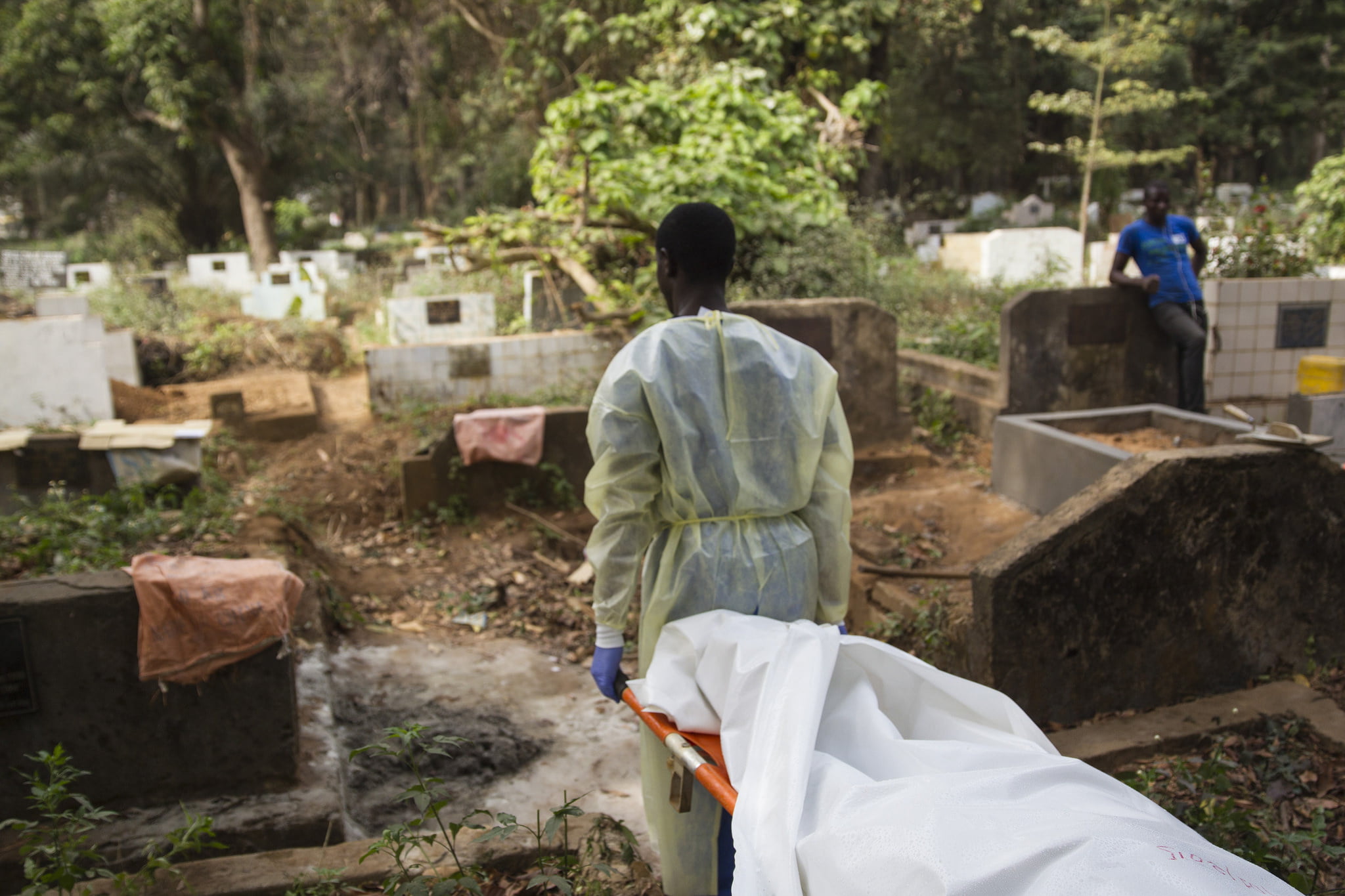New research on the 2014 ebola outbreak reveals important new details about how ebola spread so quickly across Western Africa–and what can be done to stop the next outbreak before it becomes a full blown pandemic.
The research, published in the Proceedings of the National Academy of the Sciences, indicates that the spread of the virus is far more complex than we have previously believed. It identified what are known in public health parlance as “superspreaders;” the relatively small number of sick people from whom others become infected. In this case, the study found that approximately 61% of all Ebola infections were caused by just three percent of patients.
Superspreaders are not a new concept; they were a factor in outbreaks of SARS (severe acute respiratory syndrome) and MERS (Middle East Respiratory Syndrome.) However, this research provides the first evidence of the substantial role played by superspreaders in the 2014 Ebola pandemic.
Who were these Ebola superspreaders?
The study looked at cases from the “Safe and Dignified Burials” program conducted by the International Federation of Red Cross, between October 20, 2014, and March 30, 2015, in the capital Freetown, Sierra Leone and surrounding areas. (Studying burials was key because funerals for ebola’s victims emerged as one of the main ways that the virus spread.) Researchers analyzed an existing epidemiological dataset about the Ebola pandemic using statistical methods to develop more specific estimates about Ebola transmission. They found that superspreaders tended to be either under 15-years-old or older than 45- years-old, but not in their prime of life. They also found that their geographical impact was mainly local.
There are limitations to using these kinds of datasets. Working with data collected from people who died of Ebola means that we don’t know actually know why Ebola superspreaders are so infectious. It could be social – both the young and the old are more likely to receive lots of visitors when ill, and to have caregivers who engage in hands-on care. They may also be more likely to have large funerals. But that is not the only explanation. It could also be physiological. The virus might simply be more infectious in younger and older people. Researchers cannnot find that kind of information by looking at data collected in the past. That is a challenge for the next epidemic.
Still, this research has important implications, both positive and negative. It is good news for use of the newly developed Ebola vaccine. The vaccine has been proven to be effective for only a very short time after it is administered. For the first ten days, the vaccine is 100% effective against Ebola. Ideally, the vaccine will be used to “ring-fence” an outbreak. Once a case of Ebola is diagnosed, all contacts of the infected person should be immediately vaccinated. If a small number superspreaders caused most Ebola infections, it is the ideal situation for the use of a ring-fence approach. Successfully ring-fencing superspreaders could slow or stop a pandemic, even if not every typically infectious case is ring-fenced.
It also reinforces the tremendous importance of getting people who have been infected into medical treatment as quickly as possible. The articles states that, “had the superspreaders been identified and quarantined promptly, a majority of the infections could have been prevented.” Simply put, superspreaders getting medical care in centers with effective infection control could not spread the virus.
Those who did not get care caused an increasingly large percentage of infections as the epidemic continued. According to the article, “later in the outbreak, most infected individuals were able to get a bed at an Ebola treatment center (ETC) and largely did not further transmit; as a result, those superspreaders in the community who did not make it to ETCs may have played an increasingly important role in sustaining the epidemic by generating more secondary cases.”
Rapid identification and quarantine is a function of a well-organized, well-funded health system. A strong epidemiological surveillance system, capable of identifying Ebola outbreaks immediately is not something that can be put in place in response to an emergency. It must stay in place over the long-term.
It All Comes Down to Strong Health Systems
Liberia, Sierra Leone, and Guinea don’t currently have health systems that can do that, and their current levels of foreign assistance aren’t on track to make it happen. They will require substantially more money and technical support than the nations are currently receiving. They will need assistance to create internal capacity from the ground up to ensure that epidemiological surveillance is consistent, effective, and based on local capacity rather than short-term foreign support.
Overall, this new research brings valuable new information that points us back to old challenges. The best way to get superspreaders to stop spreading Ebola is to diagnose them quickly and get them high quality health care. To do that, you need a strong health system. The countries of Liberia, Guinea, and Sierra Leone were vulnerable to Ebola pandemic because of their weak health systems. Weathering the pandemic hasn’t made them any stronger. Rapid diagnosis of Ebola and prompt provision of care and treatment isn’t impossible, but it’s also not reliable enough to be sure we can stop another epidemic.
